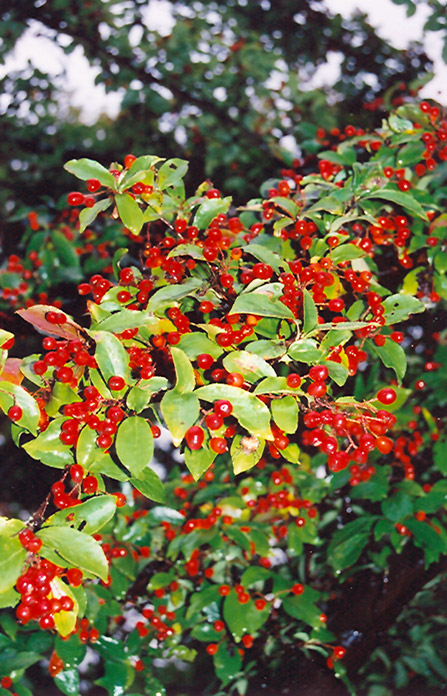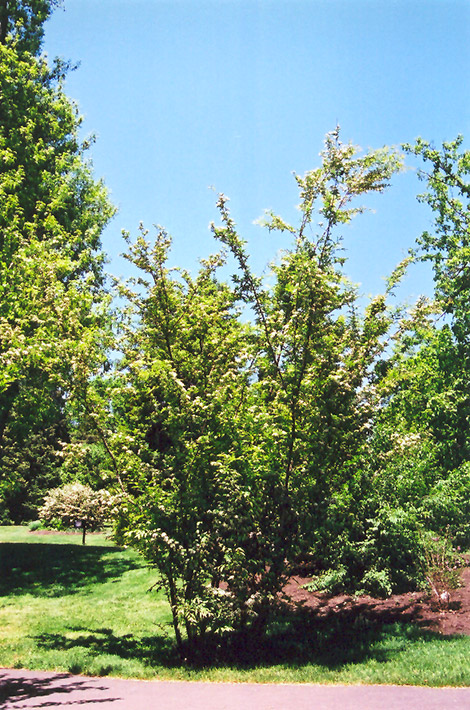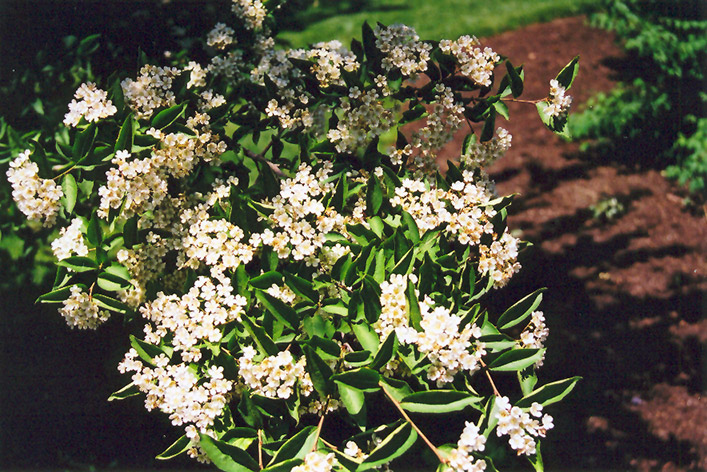Plant Finder
Height: 10 feet
Spread: 7 feet
Sunlight:
![]()
![]()
Hardiness Zone: 5a
Description:
An attractive large shrub which features racemes of pretty white flowers in spring followed by showy red berries and good red fall color; can be susceptible to fireblight where this is a problem, monitor and manage as necessary
Ornamental Features
Oriental Photinia is primarily grown for its highly ornamental fruit. The fruits are showy red pomes carried in abundance from mid to late fall. It is clothed in stunning clusters of white flowers with yellow anthers held atop the branches from mid to late spring. It has dark green deciduous foliage. The pointy leaves turn an outstanding orange in the fall.
Landscape Attributes
Oriental Photinia is a multi-stemmed deciduous shrub with an upright spreading habit of growth. Its average texture blends into the landscape, but can be balanced by one or two finer or coarser trees or shrubs for an effective composition.
This is a high maintenance shrub that will require regular care and upkeep, and should only be pruned after flowering to avoid removing any of the current season's flowers. It is a good choice for attracting birds to your yard. Gardeners should be aware of the following characteristic(s) that may warrant special consideration;
- Disease
Oriental Photinia is recommended for the following landscape applications;
- General Garden Use
Planting & Growing
Oriental Photinia will grow to be about 10 feet tall at maturity, with a spread of 7 feet. It tends to be a little leggy, with a typical clearance of 1 foot from the ground, and is suitable for planting under power lines. It grows at a medium rate, and under ideal conditions can be expected to live for 40 years or more.
This shrub does best in full sun to partial shade. You may want to keep it away from hot, dry locations that receive direct afternoon sun or which get reflected sunlight, such as against the south side of a white wall. It is very adaptable to both dry and moist growing conditions, but will not tolerate any standing water. It is considered to be drought-tolerant, and thus makes an ideal choice for xeriscaping or the moisture-conserving landscape. It is not particular as to soil type, but has a definite preference for acidic soils. It is somewhat tolerant of urban pollution. This species is not originally from North America.






